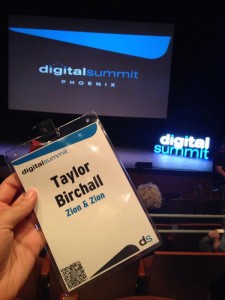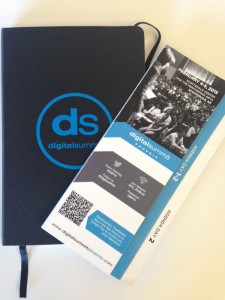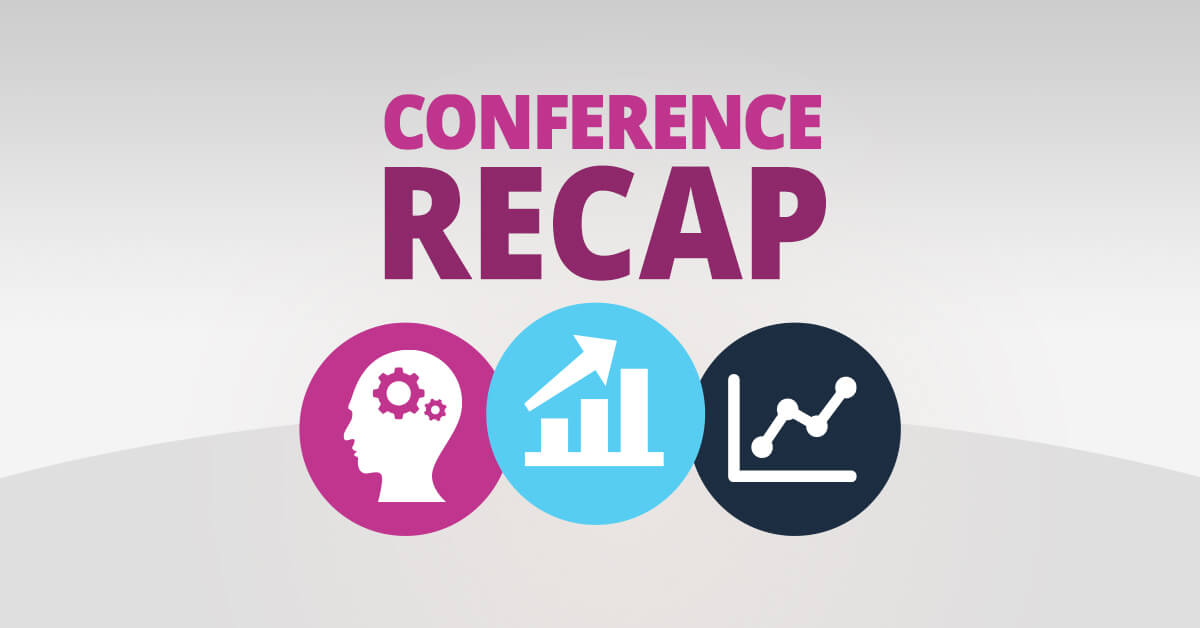Digital Summit Phoenix Recap

Digital Summit Phoenix focuses on educating marketing professionals on premier digital marketing strategies by bringing together experts from a variety of different companies and industries. Ben Holland, Associate Director of SEO at Zion & Zion, and Zion & Zion Associate Content Developers Taylor Birchall and Patty DiMaggio attended the national conference which was held at the Scottsdale Center for the Performing Arts. Seeing the Digital Summit Conference as an opportunity to learn about curating more educational content, making connections with other industry experts, and expanding our knowledge about the current digital economy, the decision for the three of us to attend came easily.
The Digital Summit Conference consisted of a two day agenda: the first day offered intensive pre-conference workshops and the second day was the main conference, full of vendors and expert, industry speakers.
Day One: Pre-Conference Intensive Workshops
All registered attendees had the option to choose one of the three 4-hour long workshops, each workshop focusing on a different aspect of digital marketing.
Advanced Search & SEO Strategies Workshop
Our Associate SEO Director, Ben Holland, writes about his experience while at the Advanced Search & SEO Strategies Workshop.
(Mike King, IPullRank & Alan Bleiweiss, Consultant)
This workshop was the best thing I went to during the entire summit. This was an in-depth look into technical SEO, including how to perform a forensic SEO audit and content strategy.
Mike was very knowledgeable and provided us with insights and action items we could take with us back to the workplace. I really enjoyed this aspect of his presentation; key takeaways are what I look for in presentations and this was one of the few sessions that had those.
Alan’s presentation was very technical and went deep into how to look for SEO issues. His presentation was highly detailed and went over most peoples’ heads. He outlined a couple tools he personally uses, as well as the process he goes through.
Three key pointers I learned and will take back to apply to my own workflow include:
- When performing a content audit, check the readability of all pages.
- Quickly get pages into Google’s index at a parameter to the URL, so it pings the search engines.
- Create a customer journey by creating valuable content for each step within the journey.
Here is a list of tools that the presenters recommended:
- Heap Analytics – An analytics tool when Google analytics doesn’t work for you
- /Keyword Tool IO – A keyword research tool
- /Grepwords – A keyword research tool
- Keyword Studio – A keyword research tool
- /URL Profiler – A site crawling tool
- /Cognitive SEO – A suite of SEO tools
- /Stat – Keyword tracking
- URL Valet – A site audit tool
- Murally – An interactive online whiteboard tool
- /Balsomiq – A wireframing tool
- Asana – A content and to do calendar
- /Google Affinity Segments – Find out what certain demographics are looking for
- /Bottlenose Sonar – A trends analyzer and alerter
- /Google Public Data – Trends in any public data
- /Marketing Charts – Charts and data on almost anything
- /99Designs – Find designers for reasonable rates
- Dribble – Designer portfolios to find a designer for you
- Contently – A service that writes content
- /Skyword – A service that writes content
- /Newscred – Content writing by news people
- /Copypress – A content creation service
- /Plag Tracker – Checks for plagiarism in content
- Grammarly – A grammar checker
- Story Bird – A storyboard tool
- Adobe Color CC – A color pallet creator
Content Marketing Strategies & Implementation Workshop
Associate Content Developer, Patty DiMaggio writes about her experience during the Content Marketing Strategies & Implementation Workshop.
(Arnie Kuenn, CEO, Vertical Measures)
The value I got out of this workshop made it worth the cost of the entire conference. It went into detail on eight different phases of content marketing:
- Strategy Development
- Ideation
- Content Creation
- Optimization
- Content Promotion
- Distribution
- Lead Nurturing
- Measurement
Arnie Kuenn is a knowledgeable SEO, speaker, and author who recently came out with the book Content Marketing Works. He gave a couple of dramatic, real-life examples that show that content marketing really does work. One example was of an appliance store called /Yale. Business was slow until the owner learned about content marketing and met with employees about implementing it into the business. Instead of waiting for people to walk through the door, they decided to create content from all of the questions the sales team received from customers. They started consistently posting articles to the company blog, and the investment paid off. Website traffic went from 40,000 to over 150,000 annually and revenue rose 40%, after starting their content marketing program. Using content marketing really turned this business around, and it can work for any business that knows how to use it.
Three key pointers I learned and will take back to apply to my own workflow include:
- To generate new content ideas, think of questions customers may be asking regarding a company’s products/services, then google the question and see if anyone has answered it yet. If the answer is no, this means one thing: opportunity!
- Help a company’s content get found on the search engines by optimizing each blog post for SEO: images should always have a description, H tags should tell bots what to expect on the page, meta descriptions and title tags should be unique to each page/post, etc.
- Measure success by looking at how many people visited the company’s website this month vs. last, how many viewed a particular post, etc. to gauge what content is most interesting to readers.
A few tools that the presenter recommended include:
- /Ubersuggest—Another keyword suggestion tool that can also be used for AdWords ideas
- Quora—A service that you can use to research questions that people are asking for content creation ideas
Day Two: The Main Conference

The full day conference on day two was an opportunity for networking and attending numerous professional speakers’ presentations that covered a wide range of topics from user experience (UX), content marketing, search engine optimization (SEO), campaign strategy, analytics and more. Three speakers presented on three separate stages simultaneously throughout the conference, providing fresh information and a chance to move around every 30 minutes. Speakers were fully prepped and delivered a presentation filled with valuable information on how we, as an agency, can stay up-to-date in today’s rapidly changing, digital economy.
UX: The Bruce Lee Way
(Joseph Dickerson, Microsoft)
This was a well-done presentation by one of the leads at Microsoft. He tied his presentation into different quotes and videos of Bruce Lee which was a nice touch. He spoke about major trends and topics and did not dive into specifics deeply. It was a great presentation and gave an excellent overview of the subject matter.
Some of the key takeaways include:
- Understand your users and customers.
- Do your research, discard what’s not useful, and then add your uniqueness.
- Strip away unnecessary elements and focus on the task at hand.
- Provide the appropriate amount of complexity. (ex: logging in through Facebook)
- UX started years ago: Disney, WW1 Cockpit, Bruce Lee.
- Know the context that the user has and what they are looking for or need.
- Use a “flat” aka simple design.
- Do usability testing on real users.
- Failure is good! You learn from your mistakes.
- Users are not objective enough to know what they want.
Creating Content Your Sales People Will Actually Share
(Rob Humphrey, LinkedIn)
Some of our notes from the presentation included:
- Set up a “concept lab”: create content from ideas generated in meetings.
- “Show” instead of “tell” through videos.
- Find stories.
Roundtable: Trends in Search & Social
(Mike King, IPullRank | Alan Bleiweiss, Consultant & Tori Jones, U-Haul International)
This was a roundtable discussion where the three professionals talked about SEO and social media. Tori and Mike had some really good insights on how the two coincide. Tori was exceptional at explaining how they (U-Haul) use social media to interact locally.
Here are a few notes from the session:
- Use pay with a tweet to download something so you can increase social engagement.
- Guest blog on popular sites that drive people to download a piece of content from your site.
- Share content on social media multiple times, even months after it has been posted.
Helpful tools that were discussed during the roundtable include:
Strategy & Campaign Assessment: Re-upping Your Marketing Game
(Jodi Wearn, Silverpop, an IBM Company)
The presentation started off with a few facts, such as how 57% of the buying process happens before brand engagement in B2B, and how buyers tend to use multiple channels to make a purchase decision.
There are three types of marketers:
- Traditionalists: don’t “get” social.
- Social Strategist: struggle with deep analytics.
- Digital Pacesetters: get insights from analytics, such as ROI and brand recognition.
There are two areas to assess:
- Target market: is your marketing focused on it? Re-focus and don’t stray, understand key performance indicators (KPI’s), ask what you can do to engage more prospects.
- Engagement: are you capturing right behaviors? Actions > Words, explicit vs. implicit aka manual vs. automatic.
Develop an engagement plan:
- Assess usage behavior.
- Top/bottom performers.
- Identify areas for improvement (ex: lists, subject lines, offers).
Marketing on mobile devices:
Are customers getting an effective/engaging experience on their mobile device with your marketing plan? Mobile email open rates have increased 400% since 2011. People should not have to pinch the smartphone screen or squint to be able to read your email! Learn from others and determine what is and is not working for your business.
Mobile Guidelines:
- From Name: 25 characters.
- Subject Line: 35 characters.
- Pre-Header: 85 characters.
Mobile Plan:
- Think mobile first: assume content is viewed on a mobile device first rather than on a desktop.
- Design for mobile: “KISS” AKA “keep it super simple.”
- Make short message service (SMS) a part of the conversation.
- Social: are you using it effectively?
Additional mobile planning:
- Assign resources to monitor/promote.
- Leverage #s (hashtags) wherever possible.
- Find your market and focus on it.
- Reengagement campaigns work (ex: “we miss you” or “come back and visit us”).
- 53% of emails are opened on mobile.
- SMS has better results than email, because it is perceived as more personal.
- Get email sign ups on Facebook.
Optimizing Your Content: The 10 Most Common SEO Mistakes
(Arnie Kuenn, Vertical Measures)
The 10 most common SEO mistakes:
- Unintentional duplicate content.
- Bad backlinks.
- Over-optimization/cannibalization of target keywords.
- Bad/duplicate title tags.
- Bad/duplicate meta descriptions.
- Poorly optimized videos/images.
- Page load time is too long.
- Poor/thin content.
- Keyword mis-focus.
- Blocked pages/entire site.
Title tag is most important and should be around 55 characters in length.
Helpful tools for SEO:
The Science of Search
(Upasna Gautam, Rockfish)
Upasna uses the scientific method to test and refine her strategies. She gave us a step-by-step example of how this method can be used with great results.
State of site:
- Assess business objective.
- Assess consumer needs.
Research:
- Analytics.
- Site audit.
- Hypothesis Test.
- Baseline reporting.
- Content strategy.
- Analyze/conclude.
- KPI’s/Business objectives.
- Conversion: organic traffic, local search success (key).
- Brand + unbranded keyword + location = Search Term.
- Use brand name.
- Build connections.
- Where is the consumer coming from?
- Use city, state, and zip.
- Separate page for multiple locations.
- Long-tail description/phrase.
A helpful tool to use:
- /www.schema.org—helps webmasters write in a conversational tone on HTML pages so search engines better understand the content
Roundtable: Trends in User Experience
(Cliff Seal, Salesforce) (Joseph Dickerson, Microsoft) (Michael Salamon, The Integer Group)
UX strategist are always trying to solve new problems.
Where is User Experience (UX) going?
- No longer is it acceptable to just throw something out there. Everyone has the basics down!
- Expectations of users are higher.
- User’s expectations of how things should work and perform are higher.
- It’s our job to align tasks with the user’s expectations.
Welcome to the Funnel: Proven Tactics to Turn Your Content and Social Media Marketing Up
(Jason Miller, LinkedIn)
This was a favorite presenter for most of us. Jason Miller had great energy and gave us lessons we could leave with and apply directly to our workflow at the agency. He discussed his success with content marketing at Marketo and LinkedIn. His presentation was mixed with lyrics and images from rock groups in a hilarious way.
A few interesting tips from his presentation included:
- LinkedIn content pages get seven times more traffic than jobs pages.
- Launch content like you would launch a product and support the launch with social media.
- All you need is one home run a quarter.
